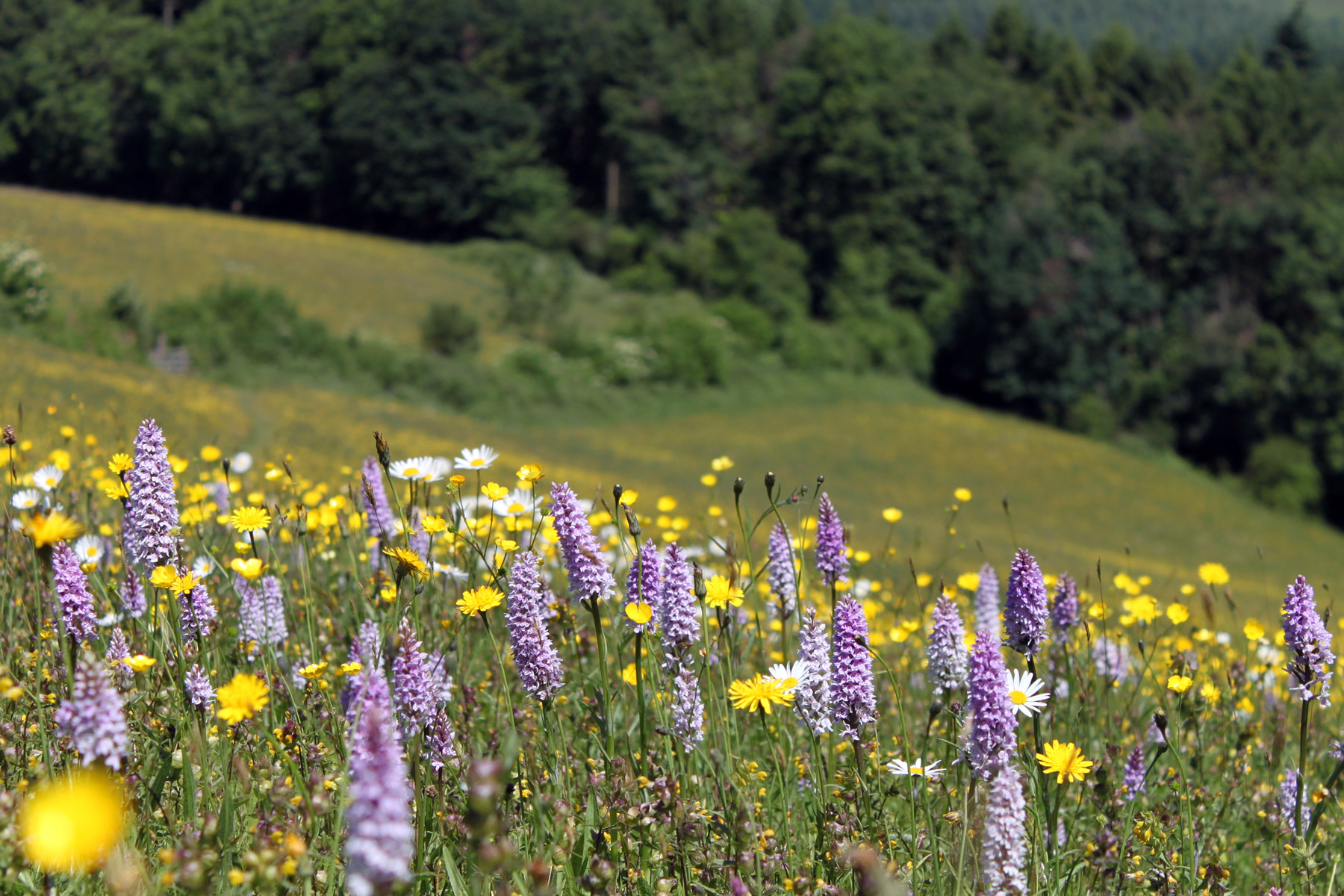A very big thank you to Malcolm and Ann Russell who hosted this year’s seedling safari and winter meadow management training day at Westfield Steading on a misty late November day.
Malcolm and Ann have restored 1.5ha of species poor grassland as part of the Airwick – WWF-UK project using brush harvested seed from two local donor sites.
After an introduction to the site itself we discussed the restoration methods used, very shallow power harrowing in this instance, to open up the grass dominated sward and create enough bare earth before the introduction of the donor seed.
We then discussed the importance of keeping the sward open over the first winter and discussed the different methodologies for achieving this; both through grazing and mechanical means. The key message is to take the seedling’s eye view and think about how to maximise the availability of the three essential things needed for germination; light, air and water.
Grazing needs to be monitored carefully to avoid unwanted soil damage through poaching if conditions get too wet in the winter, and also to ensure that any livestock is removed the following spring before they start eating desirable wildflower seedlings, in particular yellow rattle which is an annual.
 Split into smaller groups, attendees then had a go at identifying some of the early seedlings already emerging. The following desirable broad-leaved herbs were recorded:
Split into smaller groups, attendees then had a go at identifying some of the early seedlings already emerging. The following desirable broad-leaved herbs were recorded:
Ox-eye daisy, Ribwort plantain, Meadow buttercup, Tufted vetch, Dandelion, Red clover, White clover, Common Mouse-ear, Self heal.
Already in the space of just three months this is a species count increase of 300%!!
We then talked about less desirable species, how the risks of these germinating can also increase following grassland restoration works, and when and how is the best time to control them. Selective spot spraying or mechanical removal is suggested during the autumn and early spring while the plants are active and, in the case of spot spraying, when the livestock have been removed.
If you want to have a go at some seedling ID yourself here is a link to our Wildflower seedling ID chart
and please send us your photos of seedlings to improve and expand the chart for the group to use.


